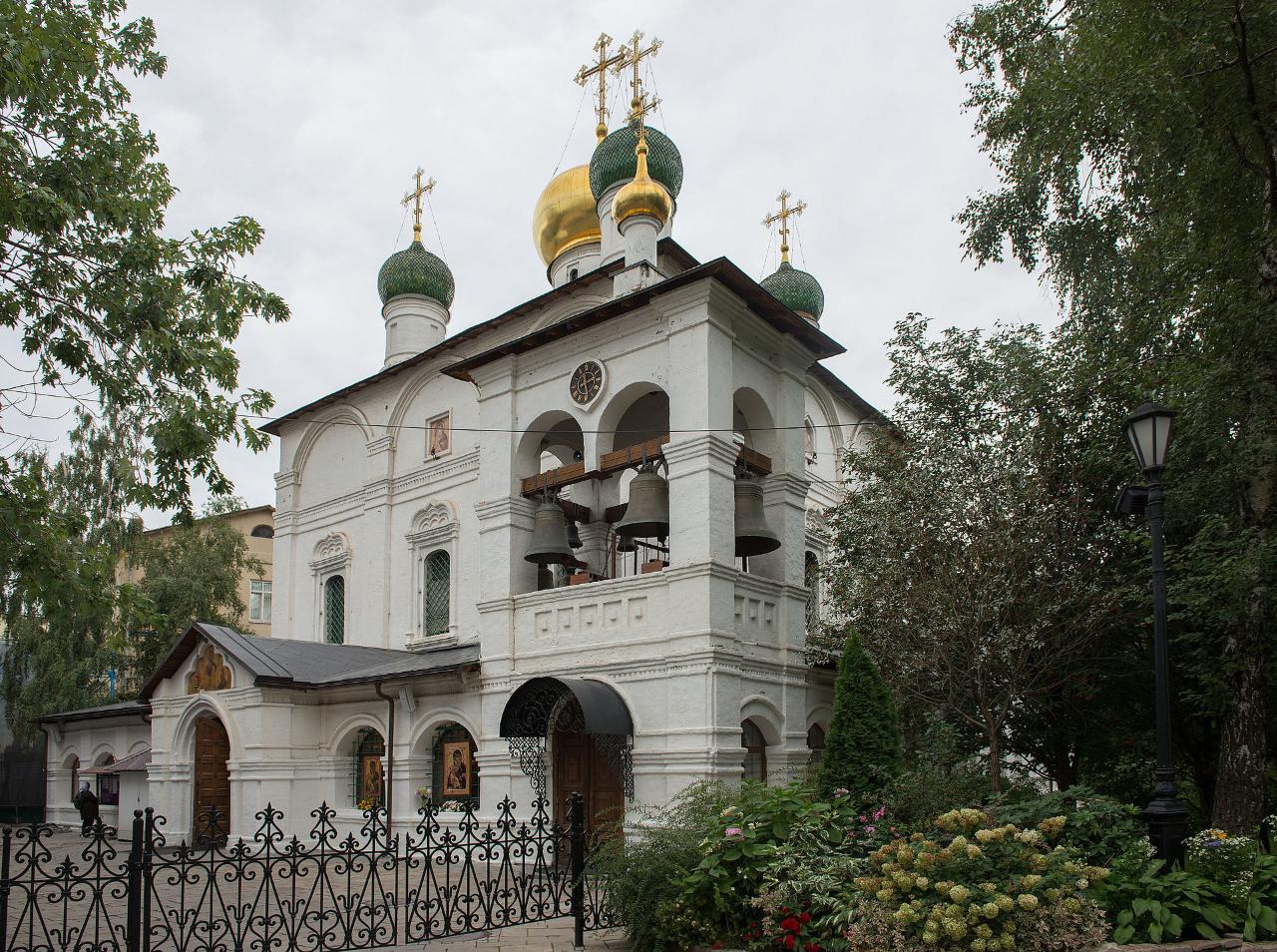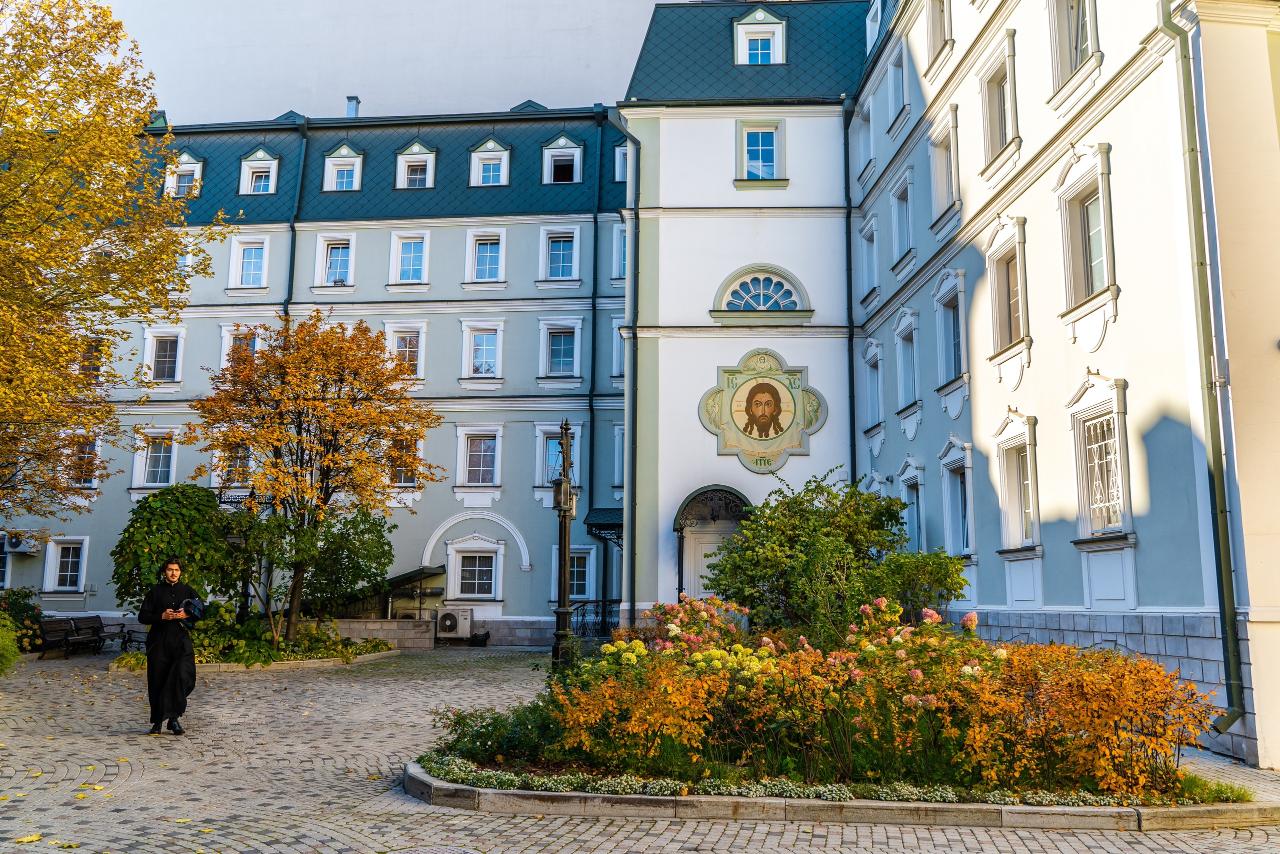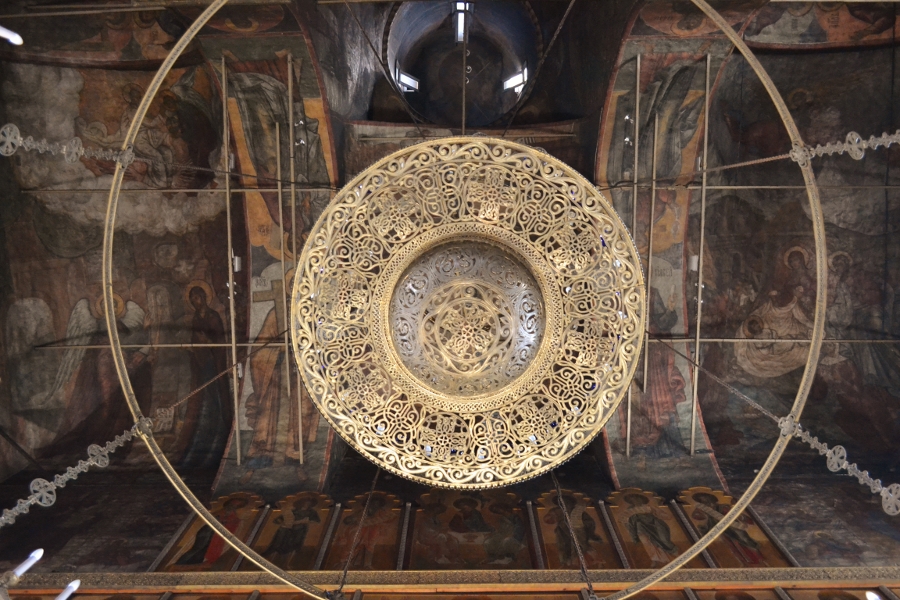Sretensky Stavropigial Monastery is a place with a unique peaceful atmosphere, a realm of spiritual harmony, a real oasis of unbreakable calm and silence. It is located in the very center of the capital, a 15-minute walk from the Kremlin, on Bolshaya Lubyanka Street. Sretensky Monastery is one of the oldest Orthodox monasteries in Moscow.
. Contents- Highlights
- History of the Sretensky Monastery
- What to see: shrines
- Opening hours of the Sretensky Monastery
- How to get there
Highlights
Today, Moscow’s Sretensky Monastery is a significant spiritual center of the Orthodox faith, reporting directly to the patriarch. This is evidenced by part of the full name: “stauropigial” – a special status received in 1995.
.
The modern complex includes:
.

History of the Sretensky Monastery
The Sretensky Monastery was built in 1397. However, its history began two years earlier – with the invasion of Russia by the invincible Turkic-Mongol conqueror Tamerlane and the real miracle itself.
Background and construction of the church
People knew all the cruelty and power of the Mongol army, and therefore did not even hope to defeat the enemy in battle and were in despair. And then Prince Vasily I (son of Dmitry Donskoy) and Metropolitan Cyprian decided to ask for help from heaven and ordered to deliver the greatest Orthodox shrine – the Vladimir icon of the Mother of God.
.
And so on September 8 (August 26, old style) the entire population of Moscow came out to greet the miracle-working relic, delivered from Vladimir by a procession of the cross in 10 days. People prayed for salvation, protection of the army and its brave leader Vasily I, asked for victory. And the miracle was accomplished!
.The next morning a messenger arrived in the city, bringing joyful and completely inexplicable news – the invincible army retreated without explanation. As legend has it, this happened because of a dream that Tamerlane saw in his tent.
.
In a white pillar of light, the Virgin Mary surrounded by angels descended to him and asked him to leave these lands forever. The dream was so explicit that it made an indelible impression on the Khan. He was terribly frightened! And so, waking up, he ordered his troops to turn around in the opposite direction.
The people rejoiced, singing in prayers the Great Savior! In memory of the miraculous rescue of Moscow on the very spot where people met the icon, the prince ordered the construction of a wooden church. They named it Sretenskaya, from the Old Slavonic “sretenie”, which means “meeting.”
.
The miracle-working icon was brought back to Vladimir. And in the church they placed its copy, skillfully painted by the painter Andrei Rublev.
.
Rulers and new constructions
Over the next few centuries, the influence of the Sretensky Monastery was strengthened.
In turn, the Sretensky Monastery served not only as a place of solace and prayer services, but also as a place of protection and healing for the faithful. It was here that Prince Pozharsky was treated after being severely wounded during the Russo-Polish War.
.
Period of prosperity
During the reign of Fyodor Alexeyevich Romanov, the monastery underwent many transformations:
- a stone Sretensky Cathedral with five chapters was erected;
- funds were allocated and a side chapel in honor of the Nativity of the Baptist of the Lord John the Baptist and monastery cells were built;
- the cathedral was painted by Kostroma icon painters;
- a part of the relics of St. Mary of Egypt was received. .
Decline and restoration
Not the most successful period for the Sretensky Monastery fell on the years of the reign of Peter the Great, because the ruler did not pity him at all. The situation was aggravated by a sudden fire that broke out in 1737.
.
As a result of the disaster were destroyed:
.- the church of St. Mary of Egypt;
- tent bell tower;
- the church of St. Nicholas the Wonderworker;
- cell and hegumen’s buildings.
The monastery existed only on the funds of benefactors, and therefore the restoration work dragged on for several decades. Only by the end of the XVIII century, life in the monastery returned to its former course, including the resumption of the former processions to the monastery.
.
Borodino and the miraculous rescue
During the War of 1812, the Virgin Mary again saved the Muscovites. It happened, as it did 417 years ago, on September 8 (old style – August 26). Then people again took the miracle-working icons and, praying for salvation, made a procession.
.
On the same day, the famous Battle of Borodino took place, as a result of which the Russian army defeated the French. Some time later, the enemy occupied the abandoned and burning Moscow, but soon (after 34 days) left the capital, driven by hunger and fear.During the occupation of the city, the French also occupied the Sretensky Monastery. There they looted the churches, set up an infirmary. Occupying the church of Nicholas the Wonderworker, the monks prayed all the time for salvation. And soon the enemy left. And the monks arranged in the monastery a hospital for soldiers of the Russian army. Also on the territory of the monastery was created a cemetery of participants of the war of 1812.
.The Revolution of 1917 and its consequences
As is known, after the overthrow of tsarism, mass persecution of clergy and widespread closure of churches began. The Sretensky Monastery was also no exception.
Beginning in 1918, the Bolsheviks took the following measures at various times:
- took away the cellular buildings and outbuildings;
- confiscated church property;
- demolished the churches of St. Nicholas the Wonderworker and St. Mary of Egypt;
- sold the bells to England;
- built a high school on the site of the cemetery.
Priests and monks of the Sretensky Monastery accepted martyrdom. They were shot, tortured, buried alive in the ground, crucified on crosses.
.
The walls of the temples vandals pasted wallpaper, and therefore the marvelous frescoes were preserved. Although they still suffered.
.Restoration works were carried out from 1958 to 1962. Until 1990 the Grabar Restoration Center was located here.
.
Revival of the monastery
Services in the newly illuminated church began in 1991. Over the next 10 years of the Sretensky Monastery’s functioning, the following transformations were carried out:
- renovated the monastery, paying special attention to its unique frescoes;
- installed a new iconostasis;
- built a belfry;
- erected a fence;
- resumed the tradition of processions of the cross;
- erected a side chapel in honor of the Venerable Mary of Egypt;
- returned the monastery garden;
- restored all the monastery premises;
- moved the school to a new location.
The renewed complex illuminated all the faithful with even greater power with blessed light!
.What to see: shrines
The Sretensky Monastery has many miraculous religious relics, including:
.Opening hours of the Sretensky Monastery
The doors of the monastery are open daily for all comers. Parishioners can visit the Sretensky Monastery from 7.00 to 20.00.
.On ordinary days, services begin at 8.00. On the days of great feasts – at 7.00. On Sunday there are two liturgies: the early liturgy at 7.00; the late liturgy at 10.00.
.
Evening service begins at 18.00.
.How to get there
Sretensky Monastery is located at 19 Bolshaya Lubyanka Street. You can take a route to the monastery from the following metro stations:
.- “Turgenevskaya”, “Chistye Prudy”, “Sretensky Boulevard”. In this case you should walk along Sretensky Boulevard towards Bolshaya Lubyanka;
- “Lubyanka” and “Kuznetsky Most”. To get to the monastery, you need to take the bus № s633 and follow it to the stop “Sretenskie Vorota”. You can also walk;
- “Trubnaya Square”. It is necessary to walk along the Rozhdestvensky Boulevard. So you will get to your destination.
You can also get to the Sretensky Monastery from the Square of three railway stations. To the destination you will be taken by bus number s633. Get off at the stop “Sretenskie Vorota.”
.